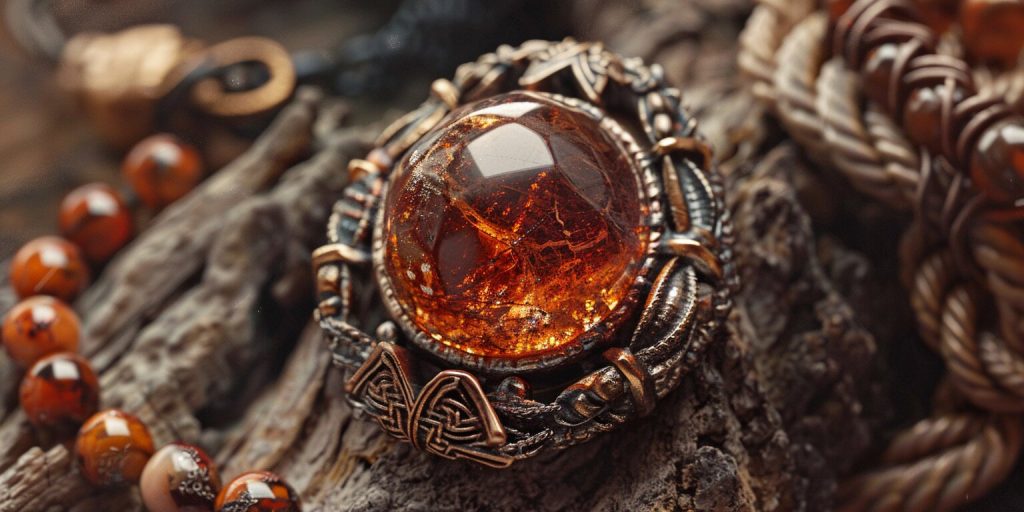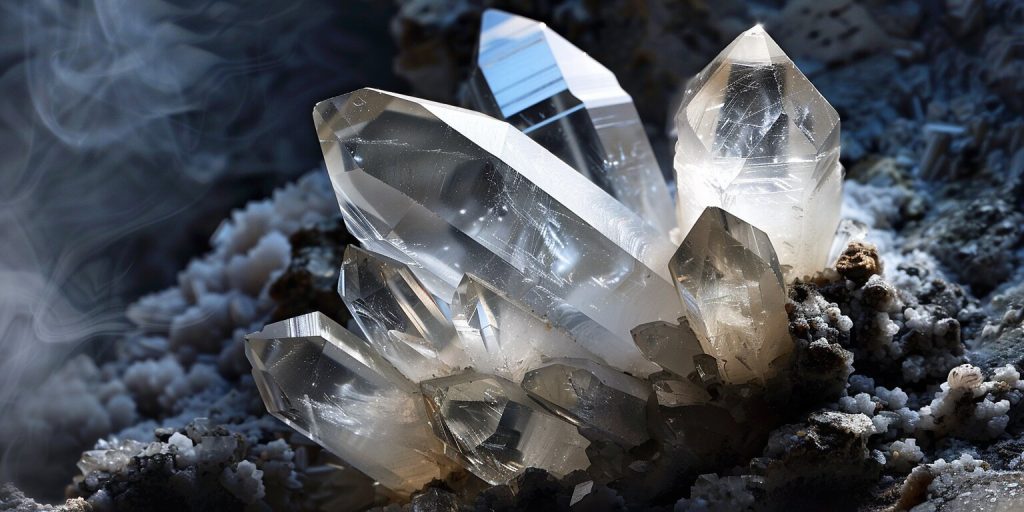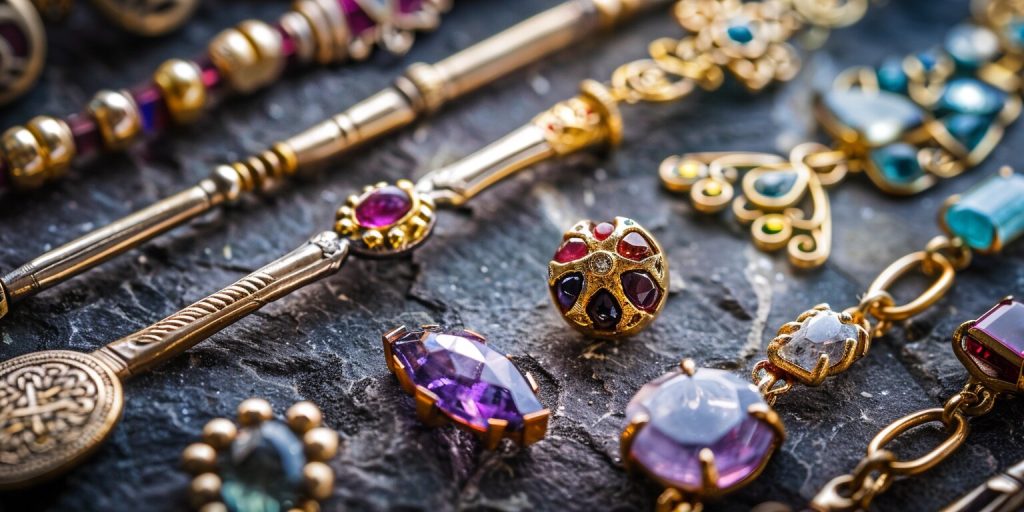Daily Life in the Viking Age, Viking Heritage, Vikings
What Gemstones Did Vikings Use For Jewelry?
The Viking Age was a time of exploration and cultural exchange. It was filled with beautiful ornaments, especially Viking jewelry made with gemstones. These gemstones were more than just pretty; they were important in Viking culture and everyday life, significantly contributing to their Viking heritage.
They showed the wearer’s status and skill in making things. This look into Viking gemstones will show us the types they used. It will also explain how these stones were important in their culture and even helped them navigate the seas.
Overview of Viking Jewelry and Gemstones
In Viking culture, jewelry was more than just for show. It was a key part of their identity and social status. The designs and meanings behind the jewelry showed off their skill in metalwork and art.
Importance in Viking Culture
Jewelry was crucial in Viking society, not just for looks. It showed wealth and status, often given as gifts or worn to highlight achievements. Gems like garnets and amethyst added to their value, symbolizing power and beauty.
For the Vikings, jewelry was a way to express themselves and connect with the divine. It was a powerful tool for communication and identity.
Use of Gemstones in Daily Life
Gemstones were used not only for decoration but also for everyday tasks. They were part of daily items, showing off the Vikings’ skills. These Viking minerals and stones were also used in trade, strengthening community ties.
This blend of beauty and practicality showed the Vikings’ deep understanding of the world. They valued both the look and the worth of gemstones.
What Gemstones Did Vikings Use For Jewelry?
Vikings loved gemstones for more than their looks. They saw them as useful, too. Iolite, sunstone, and quartz were favorites, each with its own special use. These stones were key in their jewelry and helped them navigate the seas.
Popular Gemstones Among the Vikings

The Vikings were creative with their gemstones. They used many stones, including:
- Iolite
- Sunstone
- Quartz
- Amethyst
These stones made their jewelry stand out. Their bright colors reminded them of nature. This made them very popular among the Vikings.
The Role of Gemstones in Viking Navigation
Gemstones were more than pretty for the Vikings. They were also tools for finding their way at sea. Iolite worked like a compass, helping them find the sun even when it was cloudy, and sunstones helped them see which way to go when it was foggy.
The Vikings were smart enough to use gemstones for navigation. They used these stones to sail safely across the ocean, which showed their skill and cleverness in exploring the sea.
Types of Gemstones Commonly Used
The Vikings used gemstones for more than just their looks. Iolite, sunstone, and quartz were key in jewelry and navigation. These stones showed the Vikings’ cleverness and their bond with nature.
Iolite: The Viking Compass Gemstone
Iolite is famous for polarizing light. This made it a must-have for Viking navigators. It helped them find the sun even when it was cloudy, making their sea trips safer.
Sunstone: Navigational Aids on Cloudy Days
Sunstone was crucial for Viking sailors, especially for determining the position of the sun. It could bend light to show where the sun was hidden, which was key for finding their way in bad weather and keeping them on top at sea.
Quartz and Rock Crystal: The Draw of Clarity

Quartz was used in Viking jewelry for both beauty and function. Its clarity made it stand out. The Vikings also saw it as a healing stone, offering health and protection. Its history is frequently told through sagas. They used it in jewelry and spiritual rituals, further enriching their Viking heritage.
Viking Gemstone Mining and Trade
The Vikings knew well what resources their lands held. Scandinavia was full of gemstones that were key to their lives. They mined and traded these gems, which were vital for their culture and economy.
Sources of Gemstones in Scandinavia
Scandinavia is famous for its rich mineral wealth. It offered many gemstones. The Vikings found gems like:
- Sapphires
- Garnets
- Amethyst
- Jade
- Attractive quartz varieties
They traded these gems far and wide. Skilled artisans, influenced by iolite history, turned them into beautiful jewelry and decorations, which were sought after across Europe and beyond.
Role of Trade Routes in Accessing Gemstones
The Vikings’ trade routes were key to getting these gemstones. These routes linked Scandinavia to places like the Byzantine Empire and the Middle East. Some important points were:
- Access to diverse gemstones from other cultures
- Exchange of materials and craftsmanship
- Integration of Viking goods into broader trade networks, including Greenland and Norway.
This gemstone trade made the Vikings skilled merchants. It showed their wide social and economic ties. With their gemstone sources and trade routes, they exchanged goods far and wide, from Iceland’s spar to pieces of iolite. This enriched their culture and left a mark on history, deeply influencing Viking heritage.
Symbolism and Beliefs Associated with Gemstones
In Viking culture, gemstones were more than just pretty things. They were seen as symbols with deep spiritual meaning. These stones were thought to change the ordinary into something special. The Vikings believed they could connect with the divine through these stones.
Mythological Significance of Gemstones
The Vikings linked their gemstones to Norse mythology. Garnets were seen as protectors in battle, and amethystes were symbols of wisdom and clarity, often cherished in Norway. These stories gave the gemstones deep meaning and purpose in Viking life.
Vikings’ Beliefs in Healing Properties
The Vikings saw gemstones as tools for healing and gaining insight. Certain stones were thought to cure sickness or give strength in tough times. Lapis lazuli, for instance, was valued for its calming effects.
This shows how deeply the Vikings connected with nature and the universe. They used gemstones to find balance and guidance in their lives.
Conclusion
Viking gemstones were more than just pretty things; they were a cornerstone of Viking heritage and key to the Vikings’ daily lives and beliefs. Gems like iolite and sunstone were used in jewelry but also helped with navigation on the sea by determining the direction of the sun.
These Viking crystals played many roles, showing their deep cultural impact. They tell us about the Viking way of life. The stories of their healing powers and links to power show how much meaning was in these stones, as recounted in many a saga.
The story of Viking gemstones connects us to the earth, the sea, and their culture, highlighting their profound Viking heritage. Looking back, we see the beauty and importance of these gems. They tell us about the Vikings’ history and heritage.

